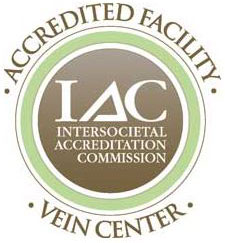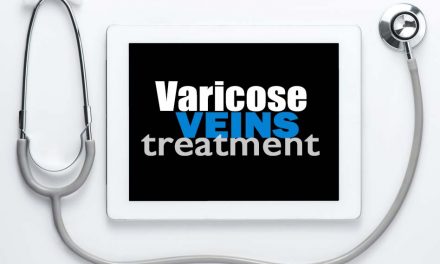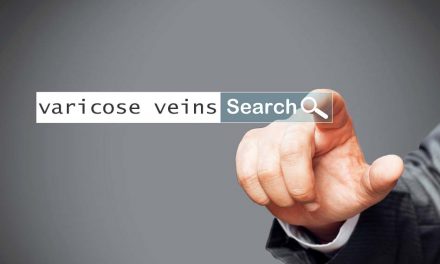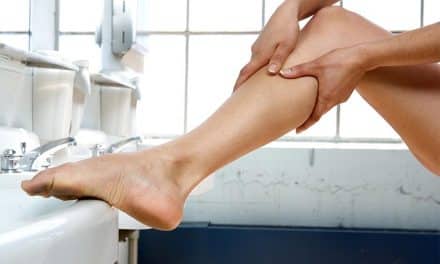
5 Really Weird but Effective Varicose Vein Treatments That’ll Amaze You

Varicose Vein Treatments are Evolving Rapidly
Three very new FDA approved treatments are so new that many insurance companies won’t cover them yet.
They are presently being tried in the United States.
Many insurance companies including Medicare consider them experimental or investigational. They are:
- Proprietary foam for injections called Varithena
- Mechanic-chemical ablation also known as Clarivein
- Adhesive or cyanoacrylate glue from Medtronic
However, this article is about the really strange treatments that are often quite successful in treating varicose veins.
Most of the trials of these bizarre varicose vein treatments are done only in Europe.
I find them interesting, but I sit alone at parties.
The Five Odd but Effective Vein Treatments
The weird varicose vein treatments that are rarely done in the United States include freezing, steaming, grinding up veins with a roto-rooter like device, removal of only the visible surface varicose veins (called ASVAL or CHIVA), and stenting insufficient valves around veins.
Let’s get started.
#1 Freezing Veins
This technique was used in Europe in the 1990s before minimally invasive treatments like laser and radiofrequency were invented.
Freezing the vein is a variant of the old stripping operation.
In a nutshell, a cryogenic probe was inserted in the saphenous vein through an incision in the groin under general anesthesia.
The probe was turned to minus 85 degrees using liquid nitrogen.
It was rapidly pulled out along with the vein.
It was very much like the traditional stripping only the stripping device was frozen.
In some articles, the investigators saw less bruising and reported improved cosmetic results.
Only one incision was necessary as opposed to conventional stripping.
Overall, it added little to the traditional approach and has been largely abandoned.
#2 Steaming Veins
Superheating veins to 120 degrees Celsius has proven useful when there are tortuous veins or nearby nerves or skin that can be damaged with presently used laser or radiofrequency techniques.
Catheters are inserted into the veins under ultrasound guidance.
Tumescent local anesthesia is used.
Since the catheters are much smaller than laser or radiofrequency devices, smaller veins can be treated.
Tortuous and superficial varicose veins can be treated more easily.
The company that produces these steam generators and catheters is called CermaVein.
Here is a YouTube video demonstrating this technique.
#3 Cuff Around Defective Valves
Varicose veins are caused by defective valves inside the veins.
The device called Venocuff is an external cuff which is placed around venous valves.
This girdle or corset helps return the valve function to normal.
This is a totally different approach for treating varicose veins because the varicose veins are actually preserved.
No veins are removed, burned, frozen or destroyed like in all of the other methods.
Similar to the disclaimer in the end credit in movies – “No animals were harmed” – No veins are harmed in this procedure.
Therefore, this is a physiologic solution to the problem.
Complications are rare.
This technique is most appropriate with minor varicose veins according to the authors of the studies done with this technique.
Here is a YouTube of this technique.
#4 Trivex (Trans Illuminated Powered Phlebectomy)
Trivex is useful when a patient has an extensive amount of large varicose veins.
This technique requires two probes to be inserted around the varicose veins under general anesthesia.
Therefore, only two mini incisions are required whereas traditional ambulatory phlebectomy requires many small micro punctures along the length of the visible varicosities.
With the Trivex device, the probe with the rotating end grinds up the varicose veins which are sucked out by the probe.
It usually results in more pain, bruising and collateral damage of surrounding tissues and nerves.
The main advantage compared to ambulatory phlebectomy is that Trivex is less tedious and time consuming for the surgeon.
#5 CHIVA and ASVAL Techniques
Theses acronyms stand for conservative hemodynamic surgery for varicose veins and ablation selective of varicosities with local anesthesia.
These methods leave the saphenous veins alone.
Traditionally, the saphenous vein is usually removed or ablated.
With CHIVA and ASVAL techniques, the varicose veins are removed but the saphenous vein remains intact.
In selected cases, the results are very good providing the saphenous vein has not enlarged significantly and its valves can return to normal once its branches (the varicose veins) are removed.
Recurrences may be as high as 35% after three years.
These techniques are based on the principle that varicose vein disease starts in the varicose veins and progresses to the saphenous veins (the ascending process).
Therefore, if you can stop this process early enough by just removing the varicose veins, the saphenous veins can be preserved.
Classically, the descending theory (waterfall effect) proposes that varicose vein disease starts in the saphenous vein and progresses to its branches over time.
The complexity and long term effectiveness of these approaches are problematic except in Europe.
Conclusion
There you have it as promised.
Five extremely weird methods of fixing varicose vein problems.
These methods have not been widely adopted in our country.
What’s the answer?
The truth is this: In the United States, traditionally stripping has been replaced by laser and radiofrequency ablation of the saphenous veins.
However, laser or radiofrequency treatments alone are not enough to rid you of your varicose veins.

It is important to choose a trained board certified to treat your varicose veins.
You don’t want someone who “dabbles” in veins.
You need that as much as increased bladder urges.
Call us at 724-987-3220 to learn more or click here to make an appointment for a consultation.









